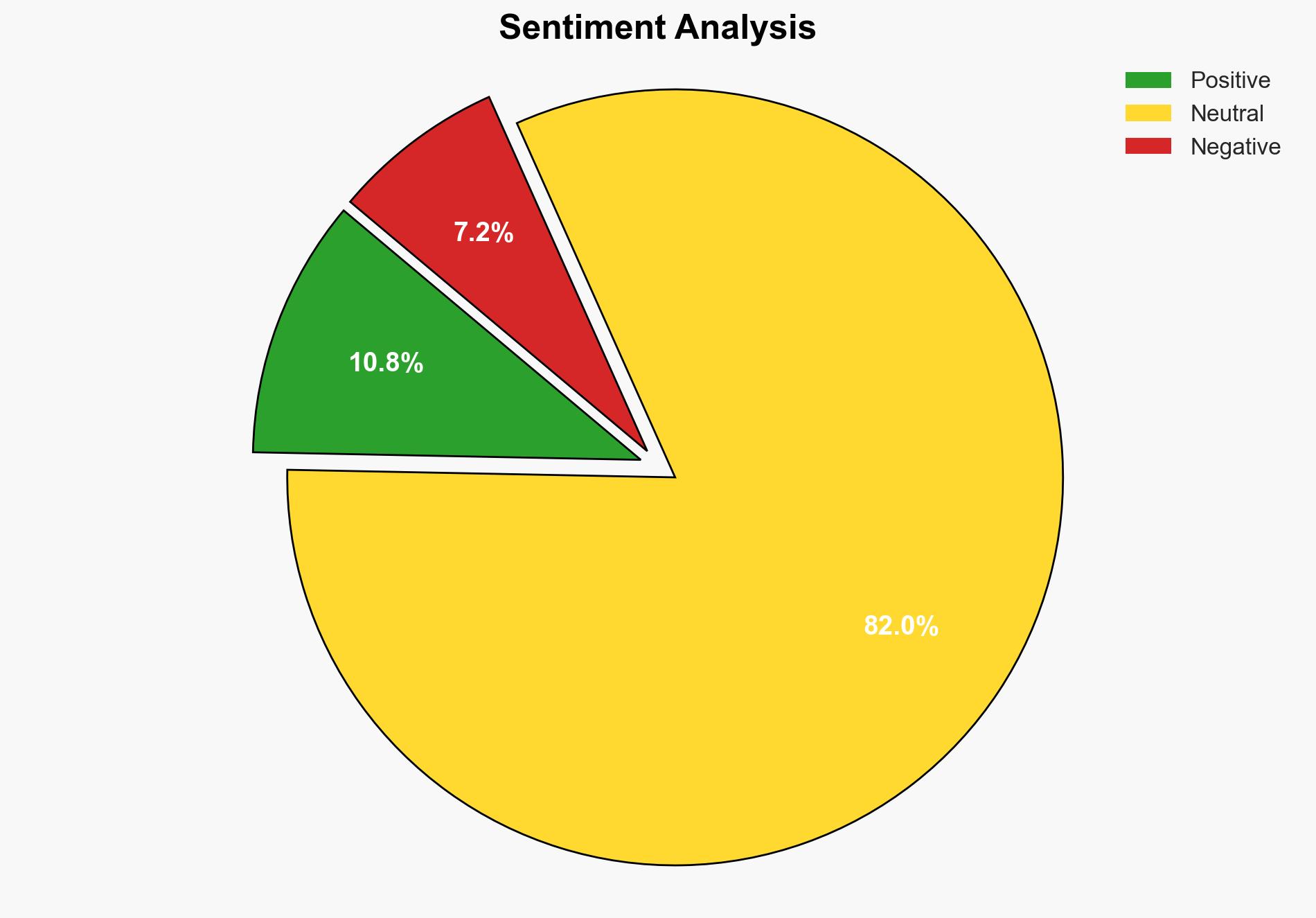Microsoft AI CEO pushes back against critics after recent Windows AI backlash the fact that people are unimpressed is mindblowing to me – Windows Central
Published on: 2025-11-19
AI-powered OSINT brief from verified open sources. Automated NLP signal extraction with human verification. See our Methodology and Why WorldWideWatchers.
Intelligence Report:
1. BLUF (Bottom Line Up Front)
The most supported hypothesis is that Microsoft’s aggressive push for AI integration into Windows, particularly through the Copilot feature, is facing significant user resistance due to unmet expectations and perceived lack of utility. Confidence level: Moderate. Recommended action: Microsoft should recalibrate its AI strategy to better align with user needs and expectations, focusing on improving core Windows functionalities while gradually enhancing AI capabilities.
2. Competing Hypotheses
Hypothesis 1: User backlash is primarily due to Microsoft’s failure to meet the advertised capabilities of the AI Copilot, leading to disappointment and skepticism about AI’s practical benefits.
Hypothesis 2: The backlash is a result of a broader resistance to AI integration within traditional software platforms, driven by user apprehension about AI’s role and potential overreach.
Hypothesis 1 is more likely as the evidence suggests specific dissatisfaction with the AI Copilot’s performance not aligning with Microsoft’s promotional claims, as highlighted by the Verge report.
3. Key Assumptions and Red Flags
Assumptions: It is assumed that user feedback is representative of the broader user base and that Microsoft’s advertising accurately reflects intended capabilities.
Red Flags: The timing of Mustafa Suleyman’s comments and the subsequent backlash could indicate a lack of internal alignment or awareness of user sentiment. The potential for selective reporting in user feedback could skew perception.
4. Implications and Strategic Risks
Failure to address user concerns could lead to reputational damage for Microsoft, impacting user trust and adoption of future AI initiatives. There is a risk of increased competition as users may seek alternative platforms that better meet their needs. Politically, increased scrutiny on AI ethics and functionality could arise, influencing regulatory landscapes.
5. Recommendations and Outlook
- Microsoft should conduct a comprehensive user feedback analysis to identify specific areas of dissatisfaction and address them in future updates.
- Enhance transparency in AI capability advertising to manage user expectations effectively.
- Best-case scenario: Microsoft successfully aligns AI developments with user needs, enhancing satisfaction and adoption.
- Worst-case scenario: Continued user dissatisfaction leads to a decline in Windows market share and increased regulatory scrutiny.
- Most-likely scenario: Microsoft makes incremental improvements to AI features, stabilizing user sentiment but facing ongoing challenges in perception.
6. Key Individuals and Entities
Mustafa Suleyman, Pavan Davuluri, Microsoft, Verge.
7. Thematic Tags
Cybersecurity, AI Integration, User Experience, Corporate Strategy, Technology Adoption
Structured Analytic Techniques Applied
- Adversarial Threat Simulation: Model and simulate actions of cyber adversaries to anticipate vulnerabilities and improve resilience.
- Indicators Development: Detect and monitor behavioral or technical anomalies across systems for early threat detection.
- Bayesian Scenario Modeling: Quantify uncertainty and predict cyberattack pathways using probabilistic inference.
Explore more:
Cybersecurity Briefs ·
Daily Summary ·
Support us





